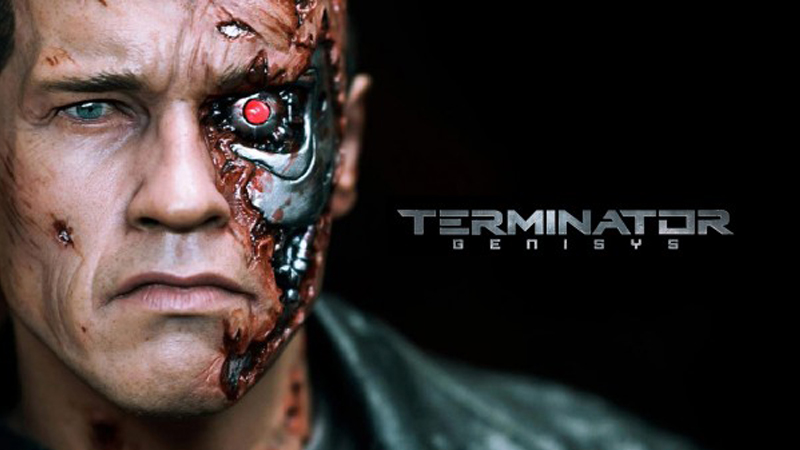If you’re a fan of James Cameron’s iconic original Terminator films starring legendary action star Arnold Schwarzenegger then you are in for a treat. Director Alan Taylor’s reboot of the original Terminator franchise, Terminator: Genisys, hit the big screen on 1 July and Prime Focus World has delivered stereo conversion services for the Paramount Pictures production.
It’s 2029, and the war between the humans and the machines is nearing a conclusion… but Skynet has a new weapon – a time machine that they have used to send a cyborg back in time to kill Sarah Connor (Emilia Clarke), mother of resistance leader John Connor (Jason Clarke). Connor sends his top soldier, Kyle Reese (Jai Courtney), back to 1984 to protect his mother… but when he gets there nothing is as he expected it to be.
Prime Focus World’s work on Terminator: Genisys was led out of its London studio by Senior Stereo Supervisor Richard Baker and SVP Production Matthew Bristowe, who worked closely with Paramount VP of 3D Post Production Corey Turner.
“In addition to PFW’s stereo conversion work on Terminator: Genisys, we had Double Negative delivering some of the heaviest VFX sequences in the movie,” said Matt Bristowe, SVP Production, Prime Focus World. “Clients are realising huge benefits from the PFW / Dneg collaboration. Knowing that the VFX was going right up to the wire due to the complicated nature of the sequences, I think it was a great advantage to Paramount that we could manage the workload more efficiently by working together across VFX and stereo conversion.”
Prime Focus World enjoys a great working relationship with Corey Turner and Paramount, having previously collaborated on the stereo conversion of shows such as Transformers: Age of Extinction, Teenage Mutant Ninja Turtles, Noah and World War Z.
“Style-wise, Corey was looking for a ‘native’ style approach to the 3D on this show,” said Senior Stereo Supervisor Richard Baker. “One of the main considerations was that when there was a lot of foreground depth we made sure that there wasn’t a great amount of depth in the background – that’s one of the consequences of native shooting, if you like. If you were shooting with a stereo rig and wanted really highly-detailed great depth in the foreground, there would be a trade off with the detail in the depth in the background – you can’t have both. If you wanted to do this with a CG shot, you would multi-rig it, with separate rigs for foreground and background areas, so that you could control the depth in each area individually – this way you can create a super-deep effect for the 3D. For this film there was a move away from this style.”
Prime Focus World’s work on Terminator: Genisys also involved lots of augmentation of shots with stereo particulates and the now standard use of head geo for the main characters to ensure accuracy and consistency of facial sculpting across shots.
“The most challenging sequences for us were the scenes in the teleporter room,” said Richard Baker. “The characters were fighting within a glowing sphere with layers of vapour going around them, lightning, explosions and more. The layering of these elements in depth was the main challenge here. There were also some shots that were originally going to be stereo renders from VFX that we ended up stereo converting. Some of these shots were really complicated. Through our in-house collaboration with Dneg we were able to identify the shots that we could pick up and convert, and those that needed a stereo render. Working together we all hit our deadlines.”
“The collaboration between PFW and Dneg is getting stronger every project,” agreed Matt Bristowe. “From asset sharing, to running a full EXR pipeline, to production efficiencies, to element harvesting, to file transfers, to the cost benefits, the advantages are tremendous.”
“Creatively this was a very high quality show, with Corey at the helm,” concluded Richard Baker. “He has super-high expectations, so meeting those expectations is always a challenge – but a challenge that we always achieve.”
The London team led the show from a creative and production standpoint, with PFW Mumbai delivering the stereo conversion. PFW Vancouver also contributed, providing production and editorial support towards the end of the project and delivering additional augmentation work.


